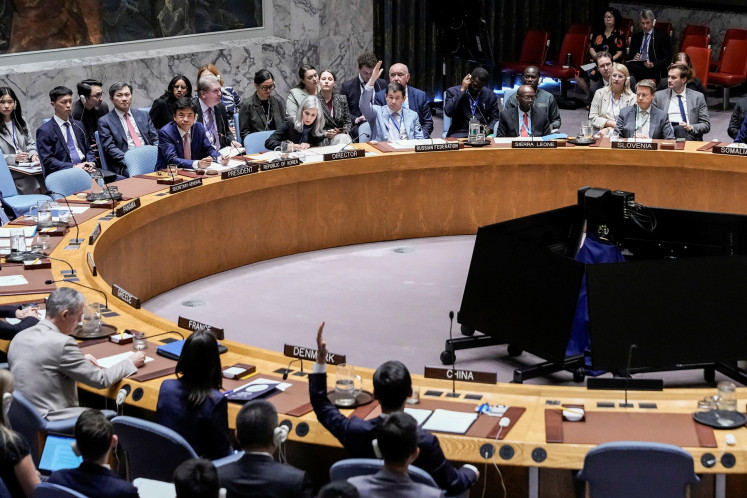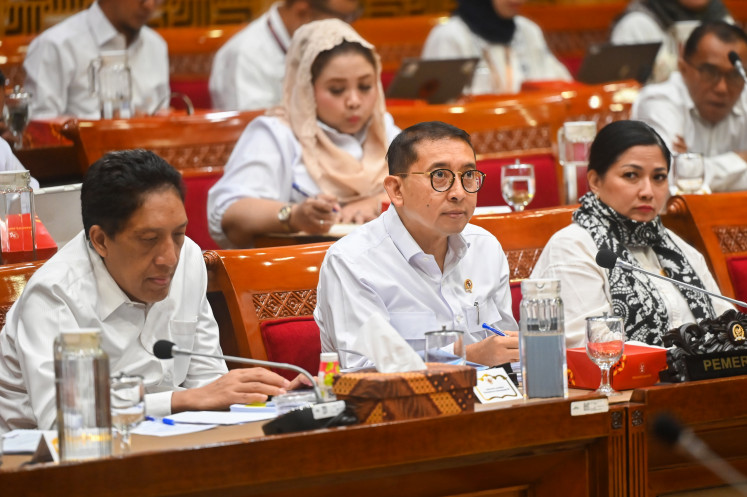Popular Reads
Top Results
Can't find what you're looking for?
View all search resultsPopular Reads
Top Results
Can't find what you're looking for?
View all search resultsResolving Indonesia’s geothermal paradox
For capital-intensive geothermal development to work, accepted wisdom prescribes a secure and large revenue base
Change text size
Gift Premium Articles
to Anyone
F
or capital-intensive geothermal development to work, accepted wisdom prescribes a secure and large revenue base. This would imply a market with commercially supportive prices, combined with iron-clad power purchase agreements (PPAs). Indonesia’s subsidy-reliant energy market lacks both, hence the scarcity of private capital.
Geothermal power’s risks are front-loaded in exploration. With huge capital invested before the first drill is sunk, a failed venture sets back an investor by several millions of US dollars.
To “de-risk” the venture, private capital insists on securing PPAs before parting with their money. On closer examination, this is the height of folly. One cannot commit to deliver before knowing how much reserves could be exploited.
Indonesian geothermal drilling is heavily influenced by the American preference for large-hole drilling. For large, contiguous areas such as the United States, economies of scale may drive efficiency.
The initial investments of mobilizing heavy equipment, constructing civil works and roads and expensive drilling, is recouped when there is large volume that could be priced commercially. For this reason, small or isolated markets are excluded, leaving geothermal power to serve the larger markets.
However, Indonesia’s archipelagic topography limits the scope for economies of scale. This is where Japan’s centuries-old slim-hole drilling could come to the rescue.
It adapts better to the small, often isolated reserves or markets that characterize Indonesia’s archipelagic geography.
As opposed to some industry perceptions, slim-hole geothermal drilling is a proven technology with a record of success locally and globally.
Fortunately for Indonesia, slim-hole drilling combined with small turbines may radically alter how geothermal resources are exploited and power development is approached.
To make geothermal power work, technological and financial innovations are employed to truly de-risk geothermal ventures.
Slim-hole drilling is given a boost by the emergence of economically viable small turbine geothermal generation.
When both technologies are deployed, a geothermal farm could be scaled according to the size of the energy market it seeks to serve. This potentially opens the micro grid markets that to date are off-limits to large-hole geothermal power.
This trait not only expands the reach of geothermal power, it actually reduces energy poverty by making indigenous energy resources accessible to local communities.
Using today’s costs for Indonesian drilling, as provided by such firms as Jacobs, Iceland’s ISOR and North Tech, the economic advantages of using slim-hole technology lies in the following: reduced drilling costs minimizing the losses from a failed exploration, enhanced success rates for a portfolio of wells, where the second well thereafter could achieve a 90 percent probability of viable reserves following a successful find, and lower resource use, such as water and above-surface installations, reducing slim-hole exploitation costs.
Turboden, an Italian affiliate of Japan’s Mitsubishi, pushes the frontiers of slim-hole technologies farther. By redesigning the well-head turbines, small generation units of less than 2 megawatts could be installed. By spreading the units, conventional geothermal infrastructure (which is expensive) is replaced by cheaper power transmission lines.
This is a similar configuration to a solar farm with one major difference: It produces more power for each MW of capacity installed.
As a result, power generation capital spending is reduced from US$2.5 million per MW to $1.7 million per MW. Converting these cost differences into lifecycle costs of energy (LCOE) comparisons, slim-hole drilling combined with small-turbine geothermal farms could substantially reduce the costs of supply. In fact, geothermal power is among the most affordable and reliable sources of power — without subsidies.
Reduced costs and scale open new markets and applications for geothermal power. These advantages are already being felt in Indonesia, where several successful wells have been developed, as in Ulubelu, Karaha, among others.
If costs and technology are not the principal hurdles, what has been holding Indonesia back from aggressively developing its geothermal resources?
Sadly, it boils down to private capital’s reluctance to assume risks, compounded by Indonesia’s heavily subsidized power and coal prices. They deter investments because no one can earn a return by selling power below cost and survive financially.
State-owned electricity company PT PLN is correcting this by creating PLN Geothermal (PLN-G). The entity is tasked with finding geothermal resources by contracting with private drillers who have proven their competence. The firm then develops and acts as the supplier of geothermal steam to the power generation developers.
Following this approach, PLN-G may employ resource insurance to minimize its financial risks. Pilot schemes for such insurance policies are used in Turkey and Kenya for the portfolios of drilling sites. The insurance assumes actuarially, say in a portfolio of 10 sites, that the first three would have the highest risks.
Once the reserves are established, the success rates of subsequent wells are estimated to be significantly high. In theory, losses on the initial wells are offset by gains on subsequent wells.
The experience to date of insurance specialists appears promising. Both Turkey’s and Kenya’s geothermal investment growth is spurred partly by employing resource insurance.
Once the resource risks are covered, private capital competes to stake their claim in a nascent geothermal market. Indonesia could clearly learn and may even benefit from such market driven instruments.
Once the geothermal reserves are established and proven, developing power generation could follow the standard project structuring and funding. In effect, after the resource finding risks are essentially covered, geothermal power becomes an investment with manageable risks and payoffs for private capital to participate commercially.
These insights offer some lessons for private capital and policy. The future of Indonesian geothermal power does not rely on having ironclad PPAs.
Its potential is unleashed and realized when the resource finding risks are resolved — or made manageable.
______________________
Ricardo G Barcelona is author of Energy Investments: An adaptive approach to profiting from uncertainties and an honorary research fellow at Imperial College Business School, London. Hanan Nugroho is principal energy planner for Indonesia’s Development Planning Agency.










